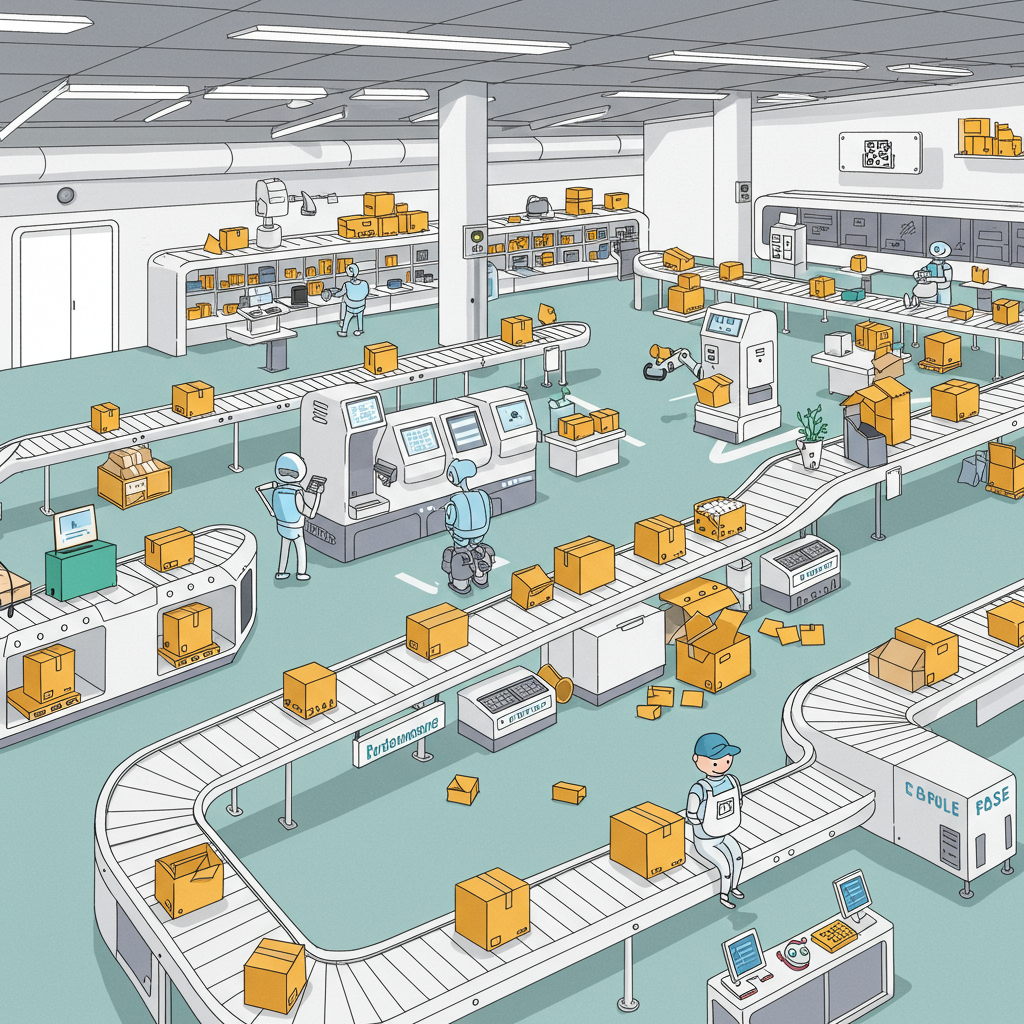Discover how software and hardware solutions can transform your order fulfillment, save time, reduce costs, and scale your e-commerce business.
As a Shopify merchant, I know firsthand the excitement of a new order. But I also know the dread that can creep in when I think about the manual process of getting that product from my shelf to my customer’s doorstep.
Packaging and shipping can quickly become a bottleneck, especially as my business grows. It’s a time-consuming, labor-intensive, and often error-prone part of the e-commerce journey.
That’s why I’ve spent a lot of time exploring and implementing packaging automation options for my Shopify store. I want to share what I’ve learned to help you streamline your operations too.
Packaging automation isn’t just about fancy machines; it encompasses any technology or process that reduces manual effort in preparing an order for shipment. It’s about working smarter, not harder.
The primary benefit I’ve experienced is significant time savings. What used to take hours of manual labor, like printing labels and packing slips, now happens in minutes, or even automatically in the background.
This freed-up time allows me to focus on core business activities: marketing, product development, and customer service, which directly contribute to growth.
Another huge advantage is cost reduction. While there’s an initial investment, the long-term savings from reduced labor costs, fewer shipping errors, and optimized packaging materials are substantial.
Accuracy is dramatically improved. Automated systems minimize human error in address entry, product selection, and shipping method assignment, leading to fewer mis-shipments and happier customers.
Scalability is perhaps the most critical benefit for a growing Shopify store. What happens when my order volume doubles or triples? Manual processes simply can’t keep up without hiring more staff, which adds overhead.
Automation allows my existing team (or even just me!) to handle a much larger volume of orders without proportional increases in effort or cost. It’s essential for sustainable growth.
So, what exactly are these automation options? I categorize them broadly into software-based and hardware-based solutions, though they often work in tandem.
On the software side, the most accessible starting point for any Shopify merchant is automating shipping label generation. Shopify Shipping itself offers basic automation, but third-party apps take it further.
Apps like ShipStation, EasyPost, or ShippingEasy integrate directly with my Shopify store. They pull order data, allow me to compare carrier rates, and print labels and packing slips in bulk.
Many of these solutions also automate tracking number generation and send automated shipping notifications to my customers, enhancing their post-purchase experience without me lifting a finger.
Beyond shipping labels, I’ve found immense value in integrating my order management system (OMS) or even a simple inventory management app with my packaging process.
This ensures that when an order comes in, inventory is automatically updated, and picking lists can be generated efficiently, often optimized for my warehouse layout.
For larger operations, a dedicated Warehouse Management System (WMS) can automate everything from receiving inventory to directing pickers and even managing returns. While perhaps overkill for a small Shopify store, it’s a powerful tool for growth.
Now, let’s talk about hardware-based automation. For most small to medium Shopify merchants, this might seem daunting, but some options are more accessible than you think.
Automated weighing and dimensioning systems, for example, can quickly capture package details, ensuring accurate shipping costs and preventing costly carrier adjustments.
For businesses with high volume and standardized products, automated box-sizing machines can create custom-sized boxes, reducing void fill and shipping costs. This is a more significant investment, but the savings can be substantial.
Automated labeling machines can apply shipping labels quickly and accurately, especially useful for high-volume operations where manual application becomes a bottleneck.
Robotic picking and packing systems are at the very high end of automation, typically seen in large fulfillment centers. While not for every Shopify merchant, it’s fascinating to see how technology is transforming logistics.
The key is how these solutions integrate with Shopify. Most reputable software solutions offer direct API integrations or dedicated Shopify apps, making the setup surprisingly straightforward.
When choosing the right automation for my store, I always start by assessing my current order volume and identifying my biggest pain points. Am I spending too much time printing labels? Are my shipping costs too high?
My budget is a critical factor. I look for solutions that offer a clear return on investment within a reasonable timeframe. I also consider the scalability of the solution – can it grow with me?
Ease of integration and the quality of customer support are also paramount. I don’t want to spend more time troubleshooting than I save.
Implementing automation doesn’t have to be an overnight overhaul. I recommend starting small, perhaps with automated label printing, and gradually adding more layers of automation as my business evolves.
One common pitfall I’ve learned to avoid is over-automating too early. Sometimes, a simple process improvement is more effective than a complex, expensive system that my current volume doesn’t justify.
Another is neglecting to train my team. Even automated systems require human oversight and understanding. Proper training ensures smooth adoption and maximizes the benefits.
The future of e-commerce packaging automation looks incredibly exciting, with advancements in AI-driven optimization, sustainable packaging solutions, and even more sophisticated robotics becoming accessible.
Embracing automation has been a game-changer for my Shopify business, allowing me to scale efficiently, reduce costs, and provide a better experience for my customers.
It’s an ongoing journey of optimization, but the rewards are well worth the effort. I encourage you to explore these options for your own store.
What do you think about these packaging automation options for Shopify merchants? I’d love to hear your thoughts!






